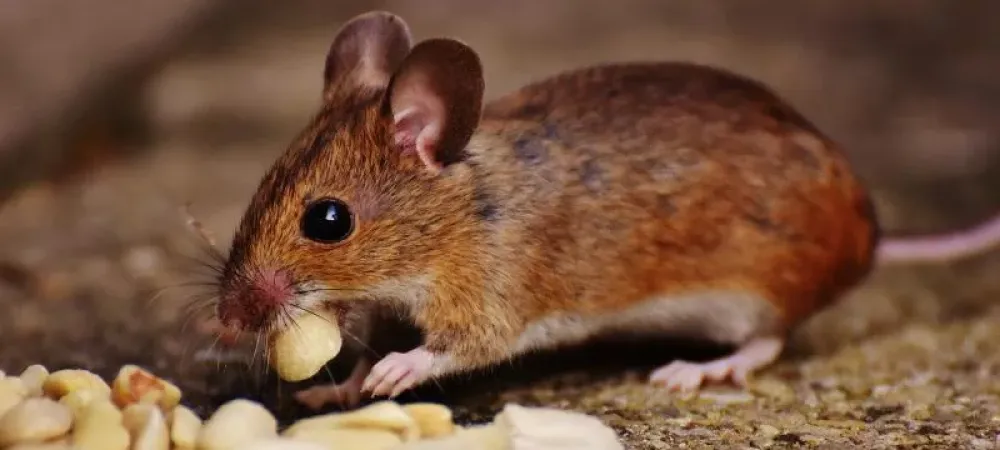How to Get Rid of Rodents

Nobody wants to find rodents in their homes, especially if they are running along your walls, scavenging through your pantry, or gnawing on your furniture, floors, insulation, or electrical wiring. And while rodents are generally not aggressive, they can transmit dangerous diseases, such as Hantavirus, Salmonella, and Lymphocytic Choriomeningitis (LCMV) through direct contract, droppings, urine, or saliva. To ensure the safety of your family and pets, here are some tips and tricks on the best rodent control methods.
Identify Points of Entry
To properly address a mouse or rat infestation, it helps to understand how the rodents are entering your home in the first place, so you can stop other pests from getting in as well. Here are some of the best practices to keep rodents out:
- Check screens on doors and windows for damages and replace if needed. Additionally, install door sweeps on exterior doors and replace any old or damaged weather-stripping around windows.
- Examine the perimeter of your house, checking for cracks, holes, or loose mortar—make sure to look especially close at areas where utilities and pipes enter your home. If you find any openings, no matter how small, try to stuff them with steel wool or copper mesh and apply caulk or foam to hold them in place.
- Remove any places rodents may hide, such as tall weeds, leaf or brush piles, or piles of firewood. Also, make sure to regularly cut back any branches or shrubbery that are within 8 feet of the house.
Use Mouse Traps
One of the easiest DIY ways of getting rid of rodents is through mouse traps. There are a few different types of traps, so make sure you use the one that works best for your home:
- Snap traps: These traps are the most common type of rodent trap and are based on a quick, clamp-like trigger system that is set off when the pest tries to move the bait.
- Electric traps: These traps consist of a small, baited box that sends a high voltage shock through the rodent if it steps inside to grab the bait.
- Sticky traps: This type of trap is also known as a glue board or glue trap and consists of a small card that is covered in an extremely sticky adhesive that traps the rodent when it tries to run across it.
- Live catch traps: Live traps use spring-loaded doors to trap rodents that come in search of food. As the name indicates, these traps do not kill the animal, allowing you to release it elsewhere.
Choose the Best Bait
Choosing the right kind of bait is just as important as choosing the trap itself, as some baits prove to be more effective than others.
- Food: Mice and rats are drawn to high-calorie foods, such as peanut butter, marshmallows, candy, soft cheese, canned pet food, and many others.
- Nesting material: Another way to attract rodents is by giving them access to materials which they can easily incorporate into their nests, such as small wads of string, cotton balls, small pieces of cloth, shredded paper, and the like.
- Specialty bait: Of course, you can always just buy specialty bait that is marked as rodent attractant products.
Use Bait Stations
Another way to get rid of a rat or mouse infestation is to use bait stations. Instead of being trapped or killed, the rodent enters the station, eats the bait, and is free to leave afterward. Unbeknownst to the rodent, the bait actually contains rat poison, cause it to die within 1-2 days.
Understand that because the bait contains food-based chemicals, they are dangerous for children, pets, and non-target wildlife. If you choose to use a bait station, please make sure to place it in an area inaccessible to your family and pets, though it may be worth considering if a trap may not be the safer option for your home.
Remove Food Sources
Aside from the shelter and warmth that your home provides, rodents are also attracted to food sources both inside and outside of your house. Here are some best practices when trying to get rid of and avoid future rat and mouse problems:
Indoor Tips
- Do not leave food out on counters or tables—instead, store it in airtight containers.
- Wash dishes and cooking utensils immediately after use and clean up any spilled food or drink immediately.
- Wipe off counters often and vacuum regularly to avoid stray crumbs.
- Limit your food consumption to the kitchen and dining room and try to keep food out of other areas of the house.
- Keep your trash in sealable containers made of stainless steel or thick plastic and take out the garbage frequently.
- Clean indoor garbage cans frequently with soap and water.
- Do not leave your pet’s food and water bowls out overnight.
Outdoor Tips
- Keep your grill and outdoor eating area free of food debris.
- Do not leave your pet’s food or water dishes outside when not in use.
- Keep all trash in sealed containers, preferably several feet away from the walls of your house.
- If you have bird feeders, consider adding squirrel guards.
- If you have a compost pile, move it as far away from your home as possible.
Call a Professional Exterminator
If you are having trouble getting rid of rodents, don’t have the time, or want the peace of mind knowing that it was done correctly, reach out to pest management professionals such as Affinity Pest Control. To ensure that we keep all pests out of your home, not just rats and mice, our certified technicians perform quarterly seasonal treatments using eco-friendly products. Additionally, we offer a satisfaction guarantee that includes unlimited free re-services if you are worried the pests have returned. Get started by contacting us today!